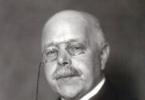29.11.2011, 11:50
Hello everyone!!! I know how to use the search, but I couldn’t find it. I decided to discuss the following: Someone says that it is possible, but you need to gas it periodically, because carbon deposits may appear. I’m waiting for your opinions.
29.11.2011, 13:08
Hello! Why do you need Mishan? Are you planning to spend the winter in your car?
I think I need to rev it up to add oil... at idle, especially if you stand for a long time, the pressure won’t be so great and the wear will be correspondingly greater.
29.11.2011, 13:46
How long is this? In general, working at XX is not the optimal operating mode because the valve timing and combustion phases are delayed in time, as well as low oil pressure, i.e. The engine was not designed for this mode. But for engines with electronic system control (I have a BOSCH Motronic ME 7.5) the situation is much better than with conventional carburetor ones. The worst thing for an engine is a start, especially a cold one; 30 minutes in the cold is better than three starts to warm up the interior. And diesel feels much better at idle than gasoline. In the north, diesel engines (for example, the Urals with the YaMZ-236 engine) can work for a month without stopping...
29.11.2011, 13:51
Is it harmful to run a motor for a long time? Idling
what does long mean? Specify...
Are you planning to spend the winter in your car?
I warmed it up for a couple of minutes and off I went. But in any case, it would be necessary to periodically “show off the gas” (or, as one famous pepper puts it, to chase the spiders)...
29.11.2011, 14:00
Is it harmful for the engine to idle for a long time?
Nobody knows about this for sure. And how can we do without it? For example, in traffic jams? What if it’s morning and the automatic transmission? Repairing it more expensive than the engine will arise. The topic will not give an answer in either direction. It will simply be eternal and with different opinions and guesses. I know only one thing - synthetics rule in such cases! :)
29.11.2011, 14:06
Not guys, I just sometimes need to sit in the car for a long time (approximately 8 hours) and during this time I don’t always drive, well, if I stand for 2 hours and warm up, it’s like, well, periodically I turn on the gas (2-4 presses), but when it’s cold yes 2 minutes, consumption at xx 0.7 and forward, only the sneaker is not full)))
Added a little later ---
Synthetics rule in such cases! Synthetics in the engine, as I understand it. Well, here (on the forum) hardly anyone uses semi-synthetics or minerals:tik
29.11.2011, 14:12
It’s all nonsense, in my opinion! There’s also electronics: a little oil will add...
Or should we also add that it’s dangerous to go downhill in neutral?!
29.11.2011, 14:14
you need to sit in the car for a long time (approximately 8 hours) and during this time I don’t always drive, but if it’s 2 hours, admit who you’re following?:gai
on topic, I think it’s not harmful :)
29.11.2011, 14:17
Synthetics in the engine
You can also use the machine. I have in Korean car The pans were filled (synthetic) and the parameters were suitable. And before that, some Canadian stuff was also synthetic (I changed the box, and they filled it in there)
It is necessary to sit in the car for a long time (approximately 8 hours) and during this time I don’t always drive, but if I stand for 2 hours and warm up
I understand so personal driver or taxi? I also worked part-time in a taxi last winter, the same thing happened - while there are no orders, I sit warming up, then they will send you an order and then sit again. Only during rush hours are you running around - the rest is idling - well, what can you do, this does not mean that the engine is now, tomorrow or in a year it will fall apart. Nothing will happen to it.
Hi all,! The situation is this: Car market. Winter. January. Frost -17. I look at cars and see how one person (apparently the owner) climbs into a Mazda S-Sport, starts it and immediately starts accelerating, all the way, until the limiter is activated. And so on for about 3 minutes. He apparently did this for more quick warm-up motor. Who can say anything about such a phenomenon? And what will happen to the engine if treated like this? forester.sg5 xt 03′ legacy b4.bl5 gt 08′ hr-v gh4 00′ forester.sh5 xt 08′
- 01/29/2007 14:57 #2 He, like a sledge, checked for the presence of a cutoff!!! but in fact, a repair like the timing belt will burst, or something else will break... there’s no need to do that anyway.
- 01/29/2007 15:29 #3 this is very bad for the engine because...
Full throttle at idle?! dangerous?
Therefore, the system, due to increased speed, tries to heat it up as soon as possible and put it into operating mode.
Then the speed decreases. And in general, at higher speeds the engine heats up faster, therefore, the oil acquires the required fluidity much faster.
Now you understand why the idle speed fluctuates with an injector, but in in this case We are talking about a situation where the rotation speed crankshaft slept from 2000 to 800-900 rpm.
Info
This is the normal situation. If the tachometer needle “jumps” in the range of 500-1500 rpm, then this primarily indicates a breakdown of the idle speed regulator.
But there are also plenty of other reasons. Similar problem may turn out to be serious, or may even resolve itself.
Attention
Usually when high speed driving, this problem is hardly noticeable, but when driving in the city, the floating speed makes the driver very nervous.
The car accelerates at idle - why does this happen?
- 30.01.2007 07:21 #15
Message from maSon - I didn’t understand why “or”... On idle speed(those.
in neutral) pressing the gas pedal to the floor is impossible? IMHO, you’re being picky 🙂 because idle speeds are those when the gas pedal is not pressed, and neutral is the gearbox mode.
- 01/30/2007 07:25 #16 Well, yes.
That is, the question is: full throttle in neutral?! Dangerous? Is it dangerous on D? 🙂 - 01/30/2007 07:44 #17 Message from dweeb because idle speeds are those when the gas pedal is not pressed. And neutral is the gearbox mode.
really... gee-gee..
The engine chokes when you press the gas pedal
Yes, I was stuck, full throttle at idle?!, but everyone understood))) There are such moronic salesmen, then you buy yourself such a gift and you will suffer, although you will not even think about what they did with this car.
forester.sg5 xt 03′ legacy b4.bl5 gt 08′ hr-v gh4 00′ forester.sh5 xt 08′
- 30.01.2007 03:31 #12 And no one will ever know what the previous owner did to her.
- 01/30/2007 06:33 #13 Message from subfor “ Full throttle at idle” - impossible, either full or at idle….
- I don’t understand why “or”...At idle speed (i.e. in neutral), pressing the gas pedal to the floor is impossible? IMHO, you’re being picky :)
- 01/30/2007 07:05 #14 Bad, of course.
But about the limiter - what do you hear? How many revolutions were there? Have you looked at the tachometer? Cold ones are generally noisier. And the fact that the oil is thick is even better.
The engine stalls when you press the gas - what could be the reasons?
As a result, the system incorrectly determines the air/fuel ratio to be supplied to the engine.
Check the regulator with a multimeter. This device must be switched to resistance measurement mode and then:
- Turn on the ignition.
- Disconnect connector PXX.
- Measure the resistance at contacts B-C, S-D. The reading on the multimeter should be in the range of 40-80 ohms.
- If you measure the resistance at contacts B-C, A-D, the device will show infinite resistance.
If the readings differ from normal, this indicates a malfunction of the regulator.
In this case, it is simply replaced and configured (calibrated) again.
This can be done at a service station by experienced craftsmen. A car owner without repair experience is unlikely to be able to carry out these operations independently.
These valves often become clogged with carbon deposits and stop working, resulting in air-fuel mixture along with the exhaust in a completely unpredictable proportion.
This leads to floating speed and the appearance of dashboard"Check" errors.
Recirculation valve exhaust gases(USR valve) is quite easy to remove, clean and put back.
After this, the engine runs smoothly and without errors. In Russia they found another way to deal with this problem: the valve is simply muffled with a steel plate, as a result of which traffic fumes do not have a passage into the combustion chambers of the engine.
Only the air-fuel mixture enters there. Yes, the amount of emissions into the atmosphere is increasing, but few people care about this. Idle speed regulator For many drivers who do not understand why the idle speed on the Kalina fluctuates, the idle speed regulator most often fails.
Most drivers have encountered a situation where the engine runs unstably or stalls at idle.
Experienced drivers know what to do if the car stalls while idling, where they need to look or tighten it, but those who have recently received a license are at a loss in such a situation. After reading the article, you will learn why the engine stalls at idle, how to find and eliminate the cause. A little theory To understand why a car stalls when idling, you need to understand how the engine functions and what processes occur in it.
- 01/29/2007 17:05 #7 I saw the same nonsense, only a man was accelerating on the street, standing on the street and smiling at passers-by!
- 01/29/2007 18:38 #8 I don’t know how it is on other brands, but on Hondas at XX speeds will not rise above 4.5 thousand, no matter how hard you try. Well, of course you can’t gas it when it’s cold. Or maybe it was warmed up? Avancier. 1999 TA1.Lancaster 2000 2.5Outback 3.0, 2004.Outback 2011, 2.5, CVT.
- 01/29/2007 18:56 #9 The man must have started to cry - he wanted to quickly warm up by the stove.
- 01/29/2007 23:22 #10 H.Z. I had a 1995 Civic 1.5 liter. cranked up to 7.5 only on the road at idle turbo Catleta - fast sofa! Barge LX470 - high sofa!
- 01/30/2007 03:22 #11 The car was cold, after the night, he started it in the morning.
Beginner drivers may have a question about why it is forbidden to drive a car when neutral gear? Automotive school teachers tell students that once you shift into neutral, the car will not be as stable as in normal gear. This is the reason why it is not recommended to change gear in neutral position during a turn, as well as during braking or going down a slope (mountain).
However, as soon as a novice car enthusiast finishes school and gets behind the wheel on his own, advice immediately begins to pour in from more experienced friends and colleagues who have been driving for more than one year. There will definitely be at least one person who will recommend driving in neutral if the opportunity arises. Who to believe, who is right?
Those who believe that driving in neutral will help significantly save your budget, and that this type of trip will also help the engine, are mistaken.
In order to give an accurate answer to this question, it is necessary to understand the technical characteristics of the car and how it works. If you look inside and get acquainted with technical characteristics- you can immediately understand that this is a mistaken opinion that driving in neutral protects the car and the engine.
Most people do not share the concept of “driving in neutral” and “coasting”. As soon as the car begins to coast in gear, its wheels are put into operation and crankshaft. Thus, the engine speed begins to decrease. Gasoline stops being supplied to the cylinders and is automatically turned off. That is, fuel economy is evident. However, as soon as you shift the gear to neutral, the wheels immediately lose contact with the engine. It starts to work at idle speed, which allows it not to stall. So it turns out that when the car is moving in neutral gear, it can spend from 1 to 3 liters per 100 kilometers. During a trip, when the gas pedal is released but the gear remains engaged, the consumption will be about 0 liters per 100 kilometers.
What happens to the car
- If you constantly coast while the gear is in gear, you can help the car. During such driving, the oil will burn less on the cylinder walls. Accordingly, the overall engine life will be increased, due to the fact that the number of explosion processes will be much reduced.
- Thus, we can conclude that for financial reasons, driving in neutral does not make sense. In addition, you will not only not be able to save money, but you can also significantly damage the car - it becomes unstable, and therefore in bad weather (for example, rain or heavy ice) this will affect the safety of your ride.
- Modern cars are equipped with such fuel system, that during engine braking, at the most high gears, the fuel supply will be cut off. However, this option is more effective if you are going down long hills. If the movement occurs on a horizontal surface, you will spend much more fuel going down and braking than you will going down in a lower gear.
Required when choosing speed mode, consider not only financial side(it is believed that when driving in neutral gear you can save gasoline), but also the condition road surface, weather and the stability of your vehicle.
The whole point of this method comes down to whether you released the clutch pedal or not - input shaft will rotate or not. The gears will not engage during this period. Bearings, accordingly, do not receive load and wear out much longer.



